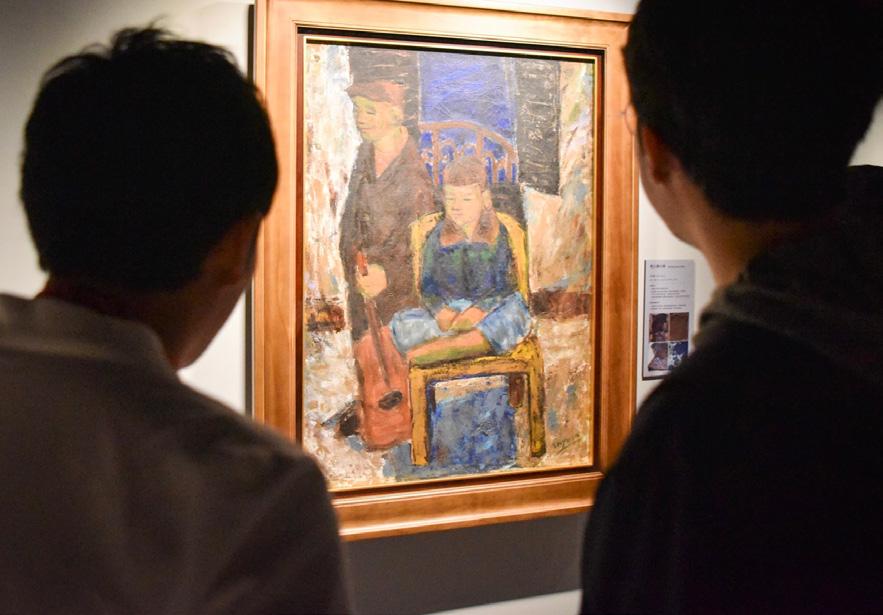
10 minute read
Brushstrokes and Breakthroughs
NTNU Museum Connects Legacy with Vision
Situated on NTNU’s historic campus, the NTNU Art Museum seamlessly merges tradition and contemporary design with its striking titanium-clad structure, featuring a façade of 192 unique triangular panels inspired by the geometric motifs of NTNU’s Fine Arts building. This modern design contrasts with the university’s four city-designated historic monuments, while red-brick accents ground it in NTNU’s architectural heritage. The aesthetics reflect NTNU’s dedication to preserving its legacy while advancing education.
Inside, the seven-story museum houses exhibition halls, conservation laboratories, classrooms, and multifunctional spaces. Inspired by the rhythm of musical notes, the interior creates a creative and interdisciplinary atmosphere. Eric Liu, the museum’s director, explains, “Our niche lies in preserving and showcasing works by alumni and exploring the future of art through technology.” Serving as both a teaching and exhibition space, the museum strengthens connections within the NTNU community and contributes to global discussions on art and innovation.
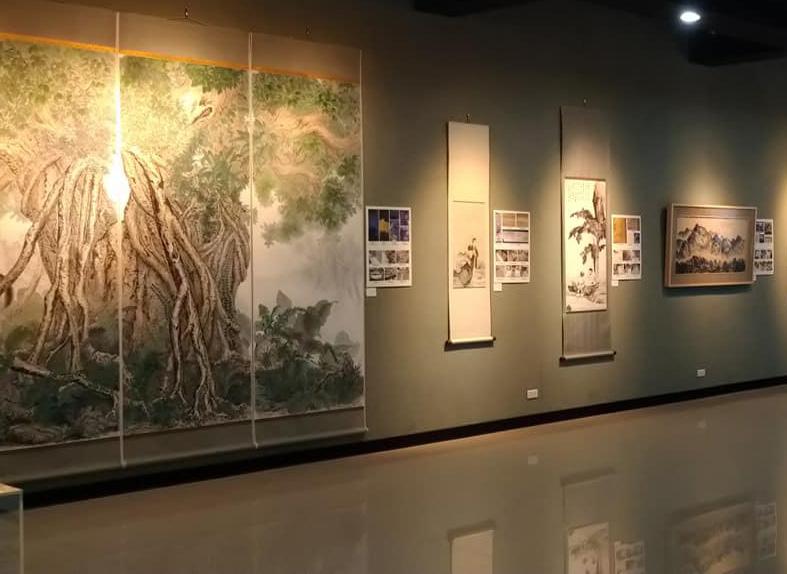
Beyond the Museum: Spaces that Inspire Creativity
The NTNU Art Museum is the latest addition to the university’s vibrant network of artistic venues, joining the Teh-Chun Art Gallery and the Taiwan Design Corner. These spaces serve as invaluable teaching resources, blending heritage and modernity to enhance NTNU’s educational mission.
The Teh-Chun Art Gallery, housed within the Department of Fine Arts building, spans 400 square meters and provides space for student exhibitions and hands-on training. Renamed in 2009 to honor alumnus Teh-Chun Chu, a pioneer in abstract painting, the gallery bridges academic theory with public engagement, nurturing the next generation of Taiwanese artists.
Similarly, the Taiwan Design Corner showcases NTNU’s innovative integration of historical preservation and contemporary education. Located in a renovated Japanese-era professor’s dormitory, it features a curated collection of Eastern and Western design artifacts, including traditional Chinese tools and Bauhaus icons. This venue stands as a testament to NTNU’s commitment to merging heritage with forward-thinking education. While students are the primary focus of these spaces, the museum also collaborates with external groups for functions and exhibitions. Director Eric Chien-Cheng Liu emphasizes that such partnerships must align with NTNU’s reputation, requiring events to be of exceptional interest, provide free admission to the university community, and adhere to non-commercial principles.
From Tradition to Transformation: NTNU’s Art Education Legacy
Since its founding in 1947, NTNU’s Department of Fine Arts has played a pivotal role in shaping Taiwanese art education. As Taiwan’s first university-level art school, the department has trained generations of educators and artists who have profoundly influenced Taiwan’s cultural history. Notable alumni include Shan-Hsi Cheng, a modern ink painting pioneer, and Yang-Tze Tong, whose calligraphy is currently featured at New York’s Metropolitan Museum. Esteemed faculty such as Chun-Pi Huang and Shih-Chiao Lee have mentored some of Taiwan’s most influential artists, while alumni lead major cultural institutions like the National Palace Museum and the National Taiwan Museum of Fine Arts.
Offering degrees from bachelor’s to doctorates, the department equips students with state-of-the-art facilities, including plaster statues from the Louvre and highresolution scanners. Its upcoming Executive Master of Arts Management (EMAM) program reflects NTNU’s commitment to preparing graduates for leadership roles in the arts.
Graduates excel in diverse disciplines, from traditional ink painting to contemporary media. Interdisciplinary programs further enrich the curriculum, merging art, science, and technology. Initiatives like the Graduate Institute of Interdisciplinary Innovation encourage students to address contemporary challenges through creative problem-solving, ensuring NTNU’s graduates remain at the forefront of their fields.
Innovating Art Through Technology
“At NTNU, we equip students with emerging technologies and encourage their integration into creative processes,” says Professor Hsin-Chien Huang, an internationally acclaimed leader in interactive art and storytelling. Winner of the Best VR Experience Award at the Venice Film Festival in 2019, Huang emphasizes that this cross-disciplinary approach “will fundamentally transform how we create and experience art.”
The Metaverse Motion Capture Laboratory, also known as the NVIDIA Studio x GIGABYTE Collaboration Space, exemplifies NTNU’s integration of cutting-edge technologies into the arts. Here, students delve into virtual reality, motion capture, and AI-assisted creation, advancing the boundaries of artistic expression in applications such as gaming, digital content creation, and sports analytics.
The NTNU Art Museum’s Stage of Light, developed under the Ministry of Education’s Advanced Display Technology Project, showcases NTNU’s integration of technology into the arts. This interactive exhibition space has featured works such as The Machine’s Eye and Rice Dragon 360, a multimedia piece inspired by traditional Hakka rituals. Rice Dragon 360 was part of Nuit Blanche 2024, connecting NTNU’s artistic endeavors with an international audience and demonstrating how cultural heritage and modern technology intersect.
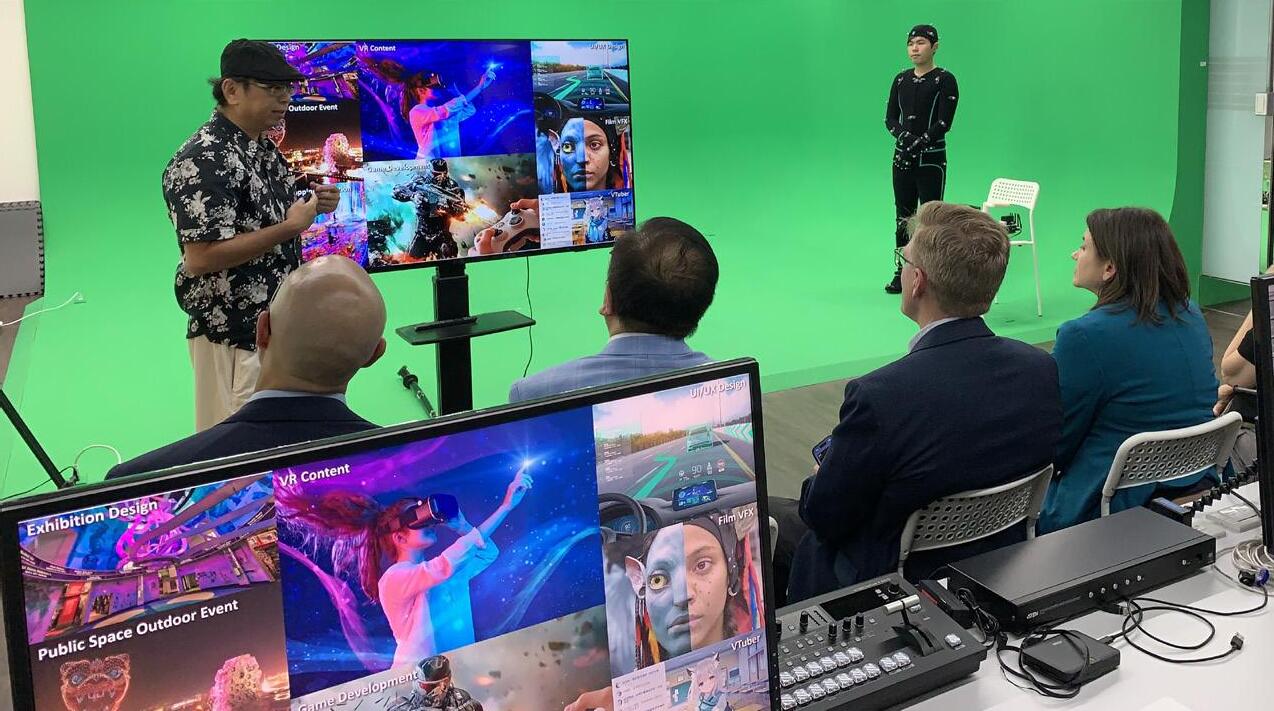
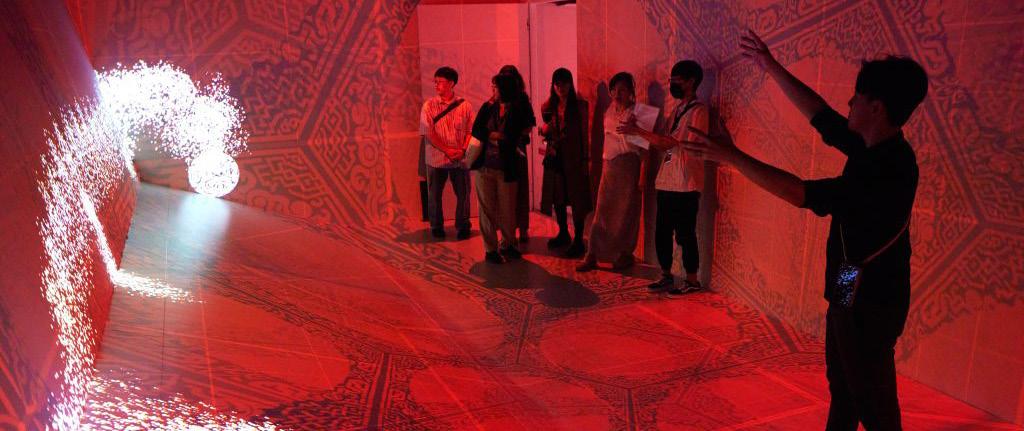
Exhibitions Bridging Technology and Creativity
“The scale and layout of the exhibition spaces at NTNU Museum are particularly suited to highlighting tech art,” said Museum Director Eric Chien-Cheng Liu. “This interdisciplinary direction also aligns with NTNU’s transformation into a comprehensive university.”
Last April, the museum debuted The Polaroid Project: At the Intersection of Art and Technology, exploring technology’s role in shaping artistic narratives with works by Andy Warhol, Ansel Adams, and others. This autumn, the museum will present a tech art exhibition curated by Professor Saiau-Yue Tsau, showcasing over 20 works by EU and Taiwanese new media artists, including Refik Anadol’s Renaissance Dreams and Bi0film.net by Hsu Jung and Natalia Rivera.
Sponsored by corporate partners such as Nvidia, Meta, and VitArt, the exhibition will explore themes of local and global culture, future aspirations, and the interplay between the virtual and real. Through digital visuals, VR, and interactive installations using AI, 5G, and XR technologies, the exhibition showcases the museum’s exploration of technological art.
In addition to its focus on technology-driven exhibitions, Professor Liu envisions enhancing the visitor experience through the addition of a gift shop featuring alumni designs and a museum café in collaboration with a Michelin-starred chef. These planned additions aim to establish the museum as both an academic resource and a vibrant cultural destination.
Guardians of Taiwan’s Cultural Heritage
The NTNU Art Museum’s permanent collection offers a rare glimpse into the early works of Taiwan’s master artists, many created during their student years at NTNU. These works document their artistic growth and offer insights into Taiwanese art history. The collection includes works by Shan-Hsi Cheng, Hui-Kuhn Chen, and Yang-Tze Tong, whose distinctive styles shaped the trajectory of Taiwanese artistic traditions.
Preserving these treasures is a collaborative effort, led by senior conservators in the Research Center for Conservation of Cultural Relics (RCCCR), with students specializing in conservation actively participating as part of their training. Combining artistic skill with advanced conservation science technologies such as Raman spectroscopy and infrared analysis, the senior conservators and students work together to stabilize and restore these significant works. Their involvement goes beyond technical skill, requiring an understanding of Taiwan’s sociocultural history and context.
RCCCR’s influence extends beyond Taiwan through its contributions to international conservation science. As the only Asian university represented in the Infrared & Raman Users Group (IRUG) pigment database, NTNU advances global art conservation efforts by participating in pioneering research and sharing its expertise worldwide. Their expertise, particularly in the conservation of artworks, recently led to a partnership with the École du Louvre, with whom the institutions signed a memorandum of understanding (MOU) in 2023 for academic cooperation and a student exchange agreement. This collaboration exemplifies NTNU’s dedication to bridging Taiwanese and global conservation practices.
Locally, NTNU has deepened its partnership with the National Palace Museum through an MOU in December 2024 that establishes internship opportunities in the museum’s conservation studios and provides graduate conservation students, including international participants, with access to guided training and coursework on cultural heritage preservation. The collaboration aligns with NTNU’s new EMAM program, which incorporates the study of National Palace Museum artifacts into its curriculum.
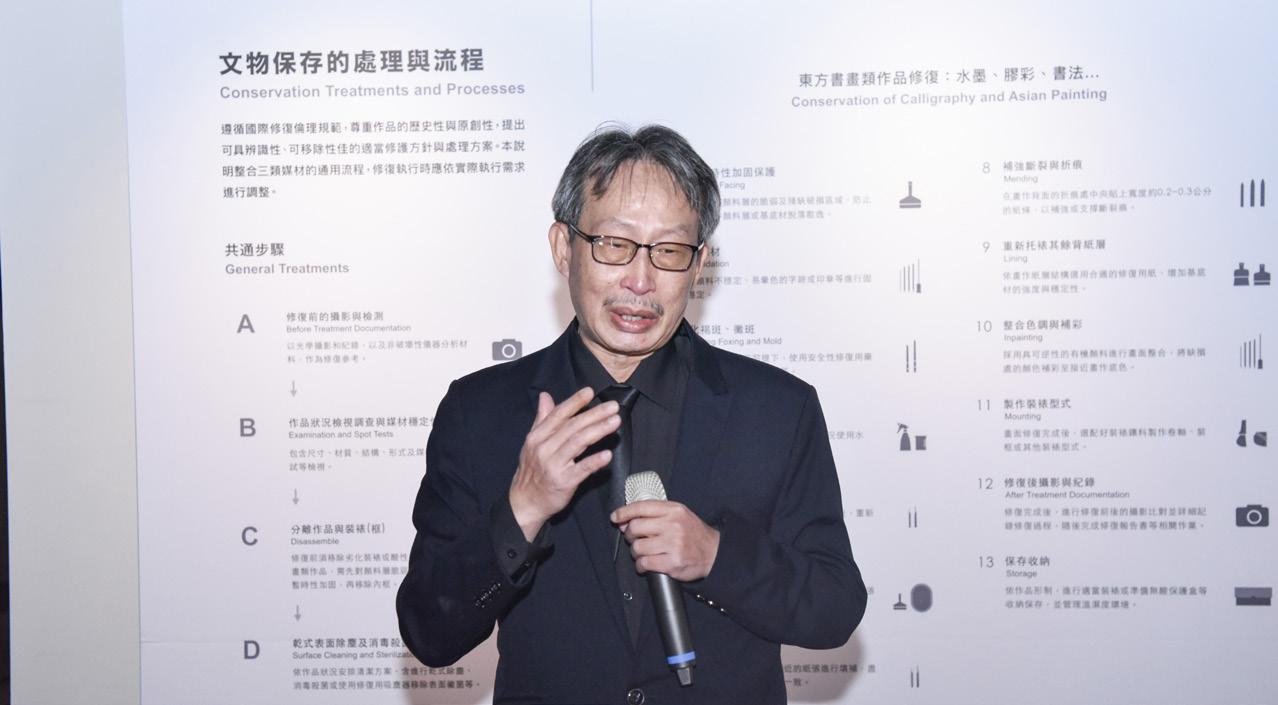
RCCCR Director Professor Yuan-Feng Chang emphasizes that educating the public about the art conservation process inspires a deeper appreciation for Taiwan’s rich artistic history and encourages stewardship for preserving this priceless heritage. She addressed a common misconception, explaining that the role of conservators is not to "repair" or restore a work to its original state. “The conservator’s role is to stabilize the work to ensure its continuity while preserving its historicity,” she explained. “Conservation does not erase a work’s historical traces. Any areas added must be identifiable and retreatable, allowing future conservators to continue preserving the original elements.”
To engage the public with this process, RCCCR collaborates with the NTNU Art Museum to curate permanent open conservation exhibitions on the museum’s fourth floor.
These events offer visitors a firsthand view of the intricate science and artistry involved in conservation, enriching their understanding of cultural preservation.
Through these efforts, NTNU safeguards its artistic legacy while offering students unique opportunities to work with historically significant pieces. This hands-on experience prepares them to excel in the field of art conservation, reinforcing NTNU’s leadership in cultural preservation.
Heritage, Innovation, and Impact
The NTNU Art Museum reflects the university’s commitment to preserving cultural heritage while embracing innovation. Through interdisciplinary programs, technological initiatives, and dedication to conservation, the museum bridges Taiwan’s artistic traditions with contemporary global practices. As it evolves, plans to enhance visitor engagement and expand offerings underscore its role as both an academic resource and a cultural institution that connects the university with the broader community. NTNU bridges Taiwan’s artistic traditions with contemporary global practices, contributing to ongoing dialogues in art and technology.


